Trends may shift, but certain design choices continue to hold their value—and that’s where evergreen bathroom ideas come in. These tried-and-true concepts prioritize practicality, comfort, and aesthetic longevity, making them perfect for homeowners who want style that lasts beyond fleeting fads. Whether it’s classic tile combinations, neutral palettes, or smart storage solutions, these ideas work across seasons and evolving tastes. With a focus on enduring function and subtle elegance, this curated guide highlights bathroom upgrades that feel relevant year after year. Keep reading to uncover design elements that balance visual appeal with daily usability, without needing constant updates.
Warm Neutrals with Earthy Accents
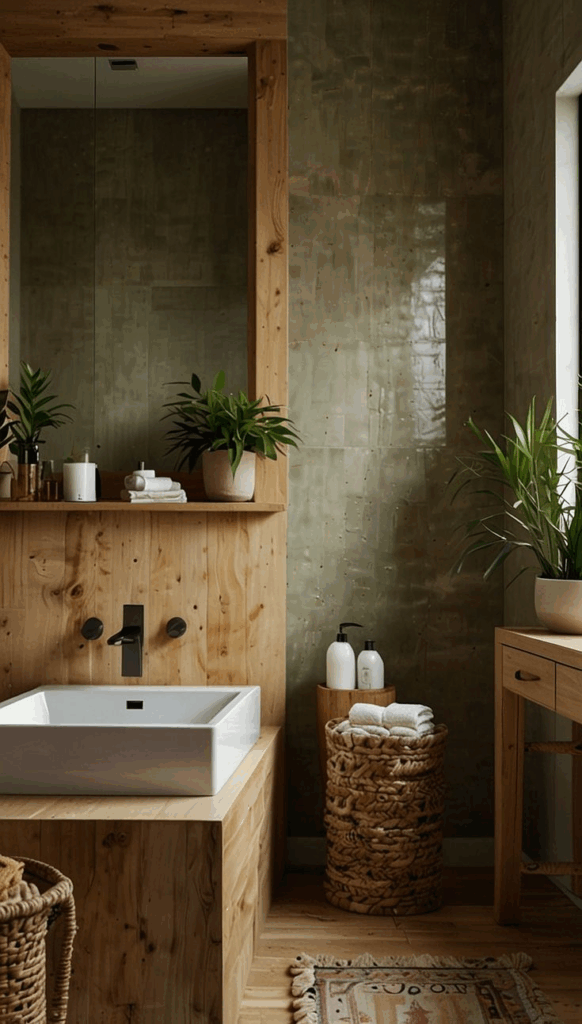
Soft beige walls, taupe cabinetry, and light terracotta elements offer an enduring base for bathrooms seeking timeless warmth. Instead of relying on flashy trends, this palette emphasizes balance and harmony by weaving in sandy undertones, muted clay textures, and organic wood finishes. Rattan accessories, oak shelving, and unglazed ceramics add tactile depth, keeping the room grounded in nature. Even subtle linen or jute window treatments contribute to the overall cozy atmosphere. What makes this combination truly evergreen is its flexibility—warm neutrals pair effortlessly with greenery, rustic brass hardware, or minimalist décor. For those redesigning with longevity in mind, this look never feels outdated or overly styled. Neutral tones allow lighting—both natural and artificial—to shine, making the space feel larger and more inviting. The addition of earthy accents doesn’t overpower but rather complements, reinforcing a calming, spa-like ambiance perfect for everyday rejuvenation.
Heritage Wallpaper with Paneling
Bringing in wallpaper steeped in historical motifs instantly imparts charm and authenticity. Think botanical prints, toile patterns, or damask finishes that echo a bygone era without sacrificing modern practicality. When paired with classic wall paneling—whether it’s shaker-style, beadboard, or wainscoting—the result is visually striking and architecturally rich. This layered design style works especially well in powder rooms and guest baths, where personality and impact matter. With modern moisture-resistant wallpapers now widely available, homeowners don’t have to compromise on durability. Choosing subdued, heritage-inspired colorways like dusty rose, slate blue, or olive green ensures the look remains timeless. Paired with chrome or antique brass fixtures, the contrast between ornate wallpaper and structured paneling adds both elegance and visual interest. Rather than appearing dated, this approach brings depth and narrative to spaces, telling a story through pattern and texture. It’s an evergreen solution for those who appreciate detail and design rooted in tradition.
Smart Technology Integration
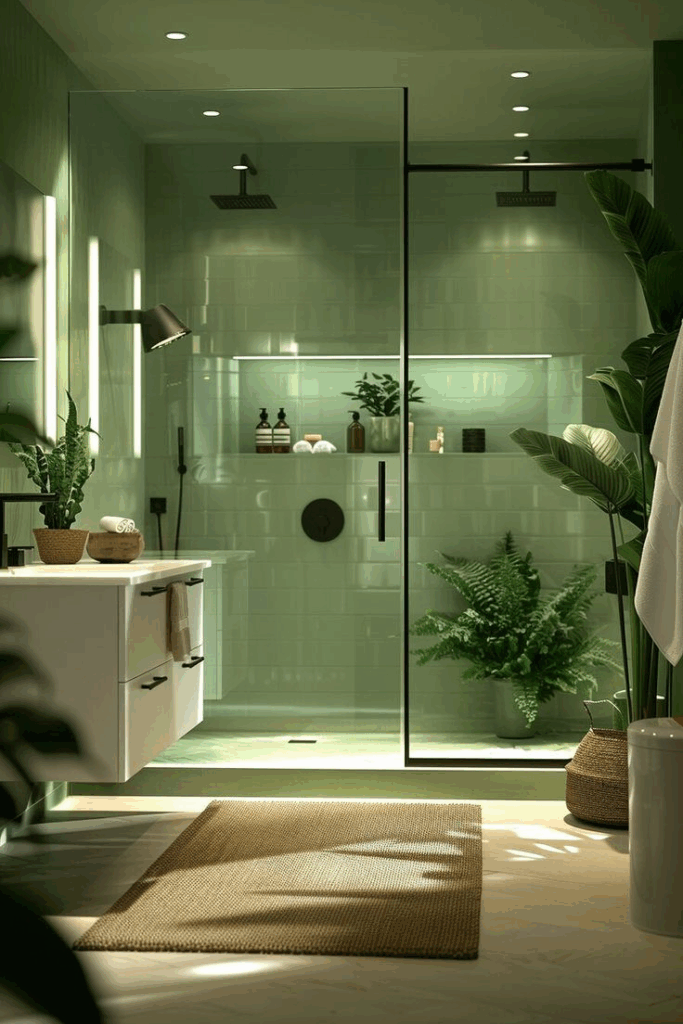
Today’s bathrooms are getting smarter without losing their sense of comfort and style. From motion-sensor faucets and voice-activated mirrors to programmable showers that remember your preferred temperature, technology is making daily routines smoother and more efficient. Heated flooring, humidity-sensing fans, and water-efficient smart toilets enhance both energy use and comfort. Integrating tech doesn’t mean compromising design—sleek interfaces and minimalist hardware allow these upgrades to blend seamlessly into both contemporary and classic bathrooms. Smart lighting can adjust warmth and brightness depending on the time of day, creating a personalized ambiance. Many systems are also app-compatible, giving users control from their smartphones. What makes this trend evergreen is its ability to adapt; as tech evolves, so do the systems behind the walls, leaving the aesthetic untouched. For homeowners planning long-term investments, integrating smart elements adds both functional value and future-proofing. The result is a bathroom that works as intuitively as it looks.
Spa-Inspired Wet Rooms
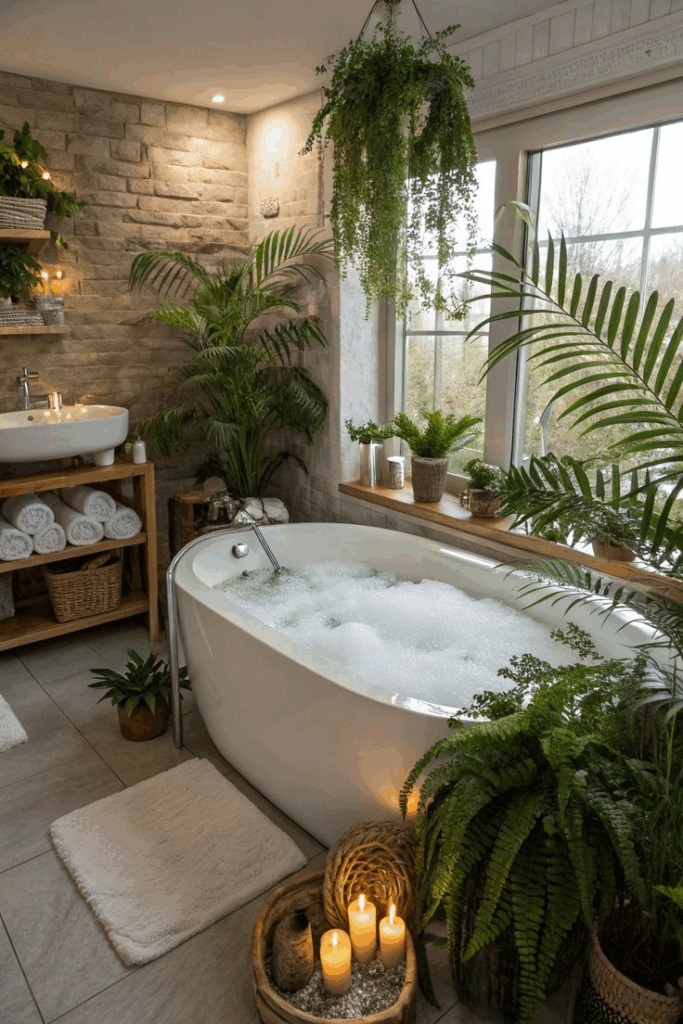
Shifting away from segmented bathroom layouts, wet rooms embrace open-concept luxury that promotes ease of movement and serene aesthetics. Fully waterproofed and often featuring a barrier-free walk-in shower, these spaces create a fluid environment where the shower, floor, and sometimes tub coexist within a single zone. Neutral stone tiles, rainfall showerheads, and frameless glass dividers contribute to the tranquil, spa-like vibe. This design is particularly beneficial for smaller bathrooms or those seeking enhanced accessibility without sacrificing style. Linear drains and sloped flooring keep water contained while maintaining a seamless visual flow. The appeal of wet rooms lies in their minimalist sophistication and practical longevity. Easy to clean, highly functional, and effortlessly elegant, they embody the best of modern relaxation. Their streamlined layout can also increase property value, especially in homes aiming for luxury appeal. As wellness continues to influence interior design, wet rooms remain a top-tier evergreen feature.
Floating Vanities with Underlighting
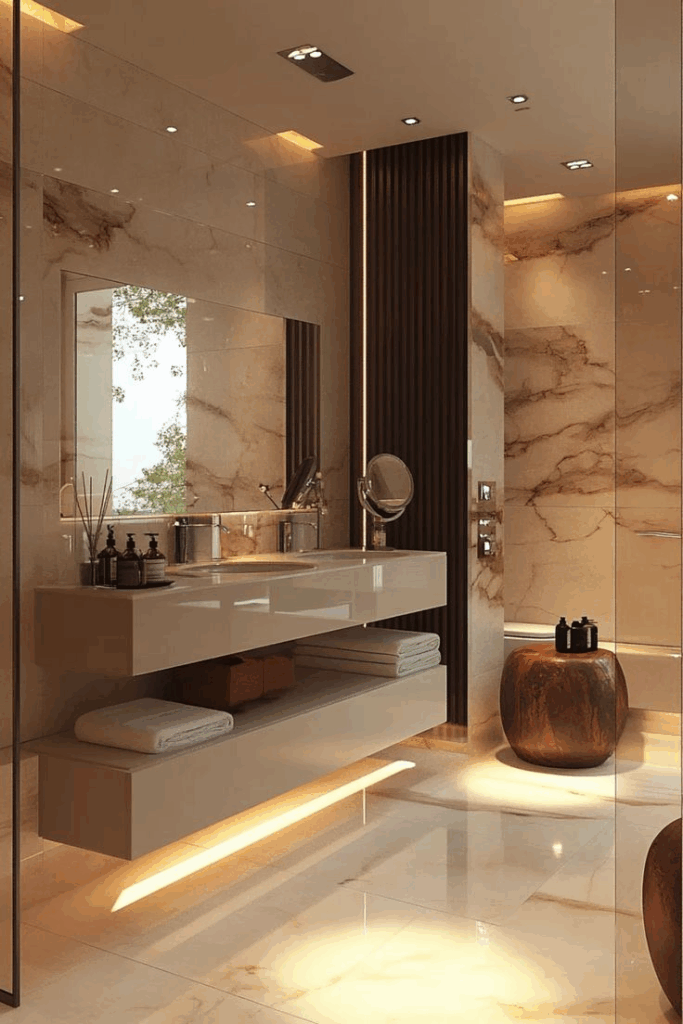
Floating vanities offer visual lightness and practical benefits, especially in compact spaces. Mounted above the floor, they expose more surface area, making the bathroom feel larger and less crowded. Paired with under-cabinet LED lighting, these vanities add ambient illumination that enhances the atmosphere while serving a practical function for nighttime navigation. Materials like walnut, oak, and matte lacquered finishes ensure design versatility across different styles—modern, transitional, or even rustic. Integrated storage compartments maintain a clutter-free appearance without compromising utility. The underlighting not only creates a soft, ethereal glow but also accentuates the architectural lines of the vanity, contributing to a clean, elevated aesthetic. This look stays relevant year after year due to its functional elegance and ability to complement evolving trends. Whether paired with stone countertops or vessel sinks, floating vanities remain a solid choice for those who prioritize smart storage, sleek visuals, and a subtle sense of luxury in their bathroom design.
Vintage Fixtures with Modern Touches
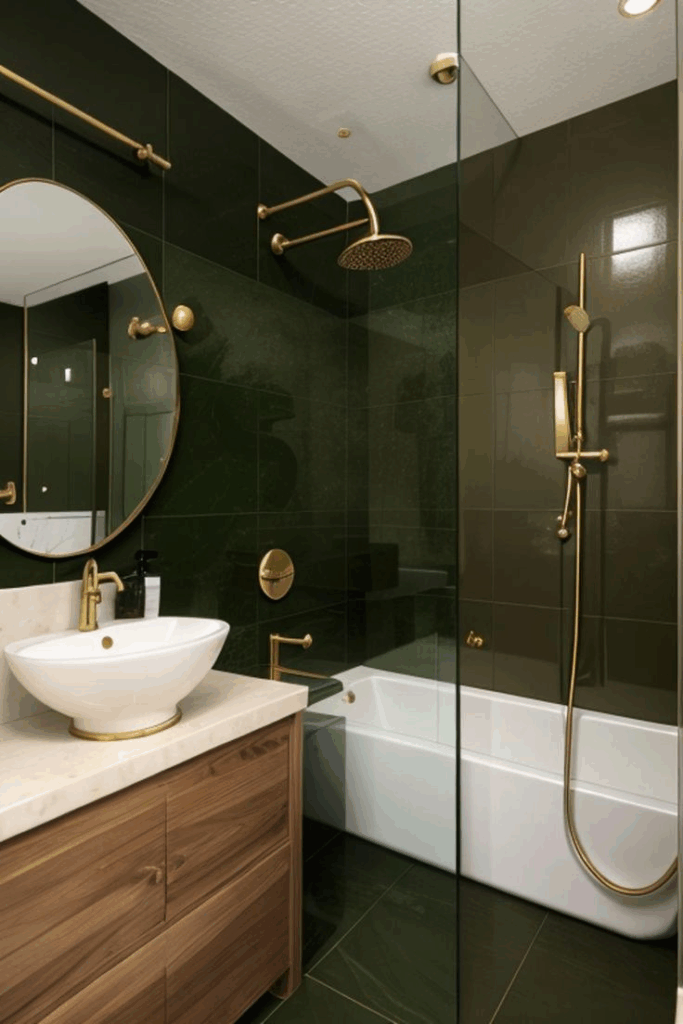
Blending retro design with contemporary comfort results in a bathroom that feels curated rather than themed. Think cross-handle faucets, clawfoot tubs, or porcelain lever flush handles, all updated with today’s finishes like brushed brass, matte black, or polished nickel. This approach bridges the gap between old-world charm and modern-day practicality. Wall-mounted sinks or exposed plumbing can pair with LED backlit mirrors and water-saving tech, ensuring no function is compromised. By anchoring the space with vintage details and layering in modern touches, you create a room that feels both personal and enduring. This style encourages mixing materials—such as encaustic tiles with quartz countertops—or pairing heritage paint colors with minimalist cabinetry. The result is far from kitschy. Instead, it’s a fresh interpretation of the past that works well in both remodels and new builds. With timeless aesthetics and innovative performance, this blend offers a bathroom experience that satisfies nostalgia and necessity alike.
Biophilic Design Elements
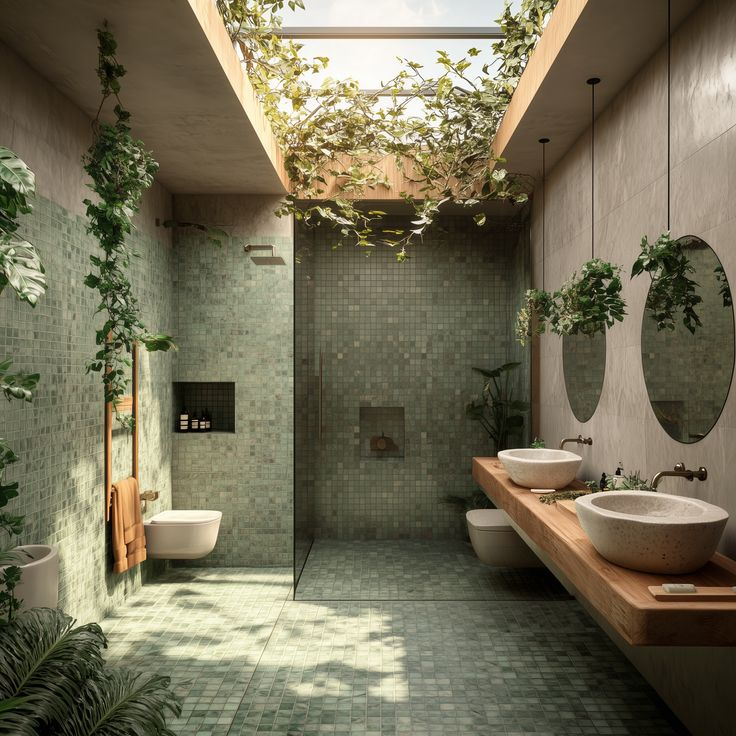
Nature within the bathroom extends beyond potted plants. Think living walls, pebble tile flooring, skylights, and natural wood elements that engage the senses and reduce stress. Materials like bamboo, slate, and river rock ground the design in authenticity, offering both tactile and visual warmth. Open shelving can house trailing greenery, while stone sinks or reclaimed wood vanities echo the rawness of the outdoors. Beyond aesthetics, biophilic elements have been shown to improve well-being, making them more than just a design choice. Indoor plants like snake plants or ferns improve air quality and thrive in humid environments, making them perfect bathroom companions. Water features—like a trickling wall fountain—further enhance the tranquil ambiance. This nature-first approach is future-forward and eco-conscious, resonating with homeowners who prioritize sustainability and emotional wellness. The connection to natural rhythms ensures this style isn’t fleeting—it’s rooted in our innate desire to bring the outside in.
Textured Wall Finishes
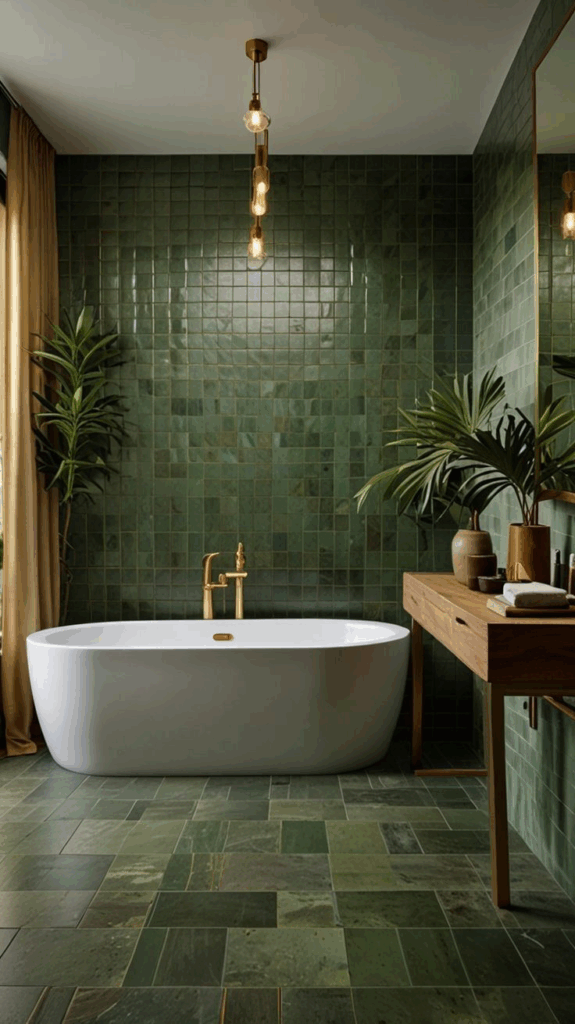
Smooth walls are giving way to more tactile surfaces that add visual and physical interest. Think microcement finishes, limewash effects, or Venetian plaster that subtly reflect light and create a layered depth. These options serve as both backdrop and statement, making artwork or mirrors stand out with more presence. Unlike paint or tile, textured finishes introduce organic imperfection, giving the room character without being overwhelming. Ideal for minimalist or modern-rustic bathrooms, the approach plays with shadow, light, and dimension to enrich the spatial experience. Many textures also offer improved durability and are resistant to moisture when sealed properly. Color variations within the material add nuance, helping the space feel curated rather than flat. From a design perspective, textured walls don’t require much additional décor—they speak for themselves. Their timeless quality lies in their understated elegance and the subtle complexity they bring, making them a quietly powerful evergreen design tool.
Freestanding Oval Bathtubs
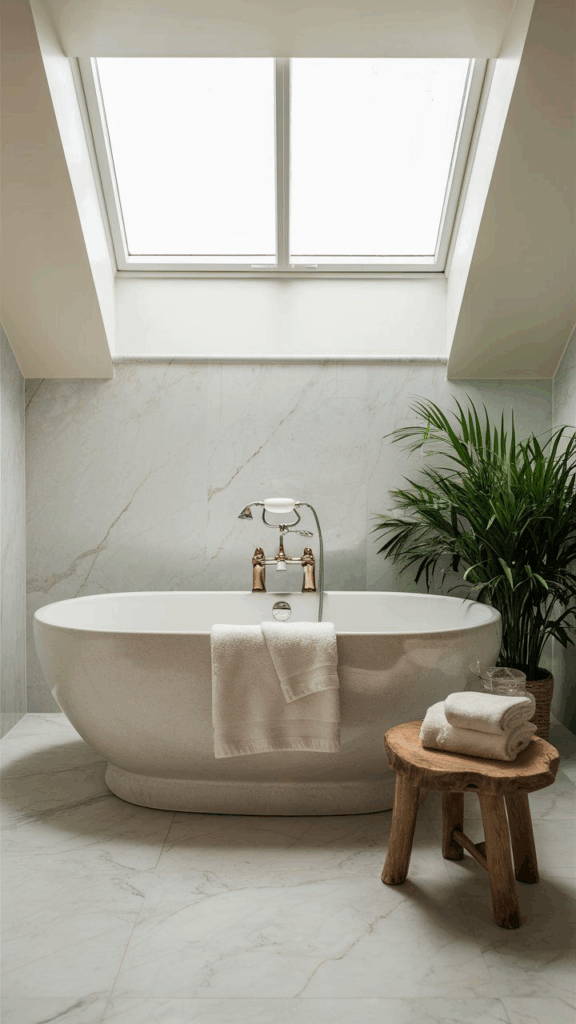
Soft curves and sculptural lines define the modern freestanding oval tub, a focal point that radiates relaxation and elegance. Unlike traditional built-ins, these tubs create a sense of openness and spa-level indulgence, especially when positioned near large windows or under statement lighting. Acrylic and stone resin remain popular materials for their heat retention and sculptural flexibility, offering durability without compromising aesthetics. Many models come with integrated overflow systems and sleek floor-mounted fillers, blending function and beauty. This style suits both contemporary and transitional spaces, adapting effortlessly to surrounding design choices like neutral stone floors or textured wall tiles. Their standalone nature allows for easy repositioning during remodels, offering future flexibility. What ensures their evergreen status is their universal appeal—they invite pause, comfort, and a visual break from angular forms. Whether matte, glossy, or textured, oval freestanding bathtubs remain synonymous with luxury and longevity in bathroom design.
Integrated Storage Solutions
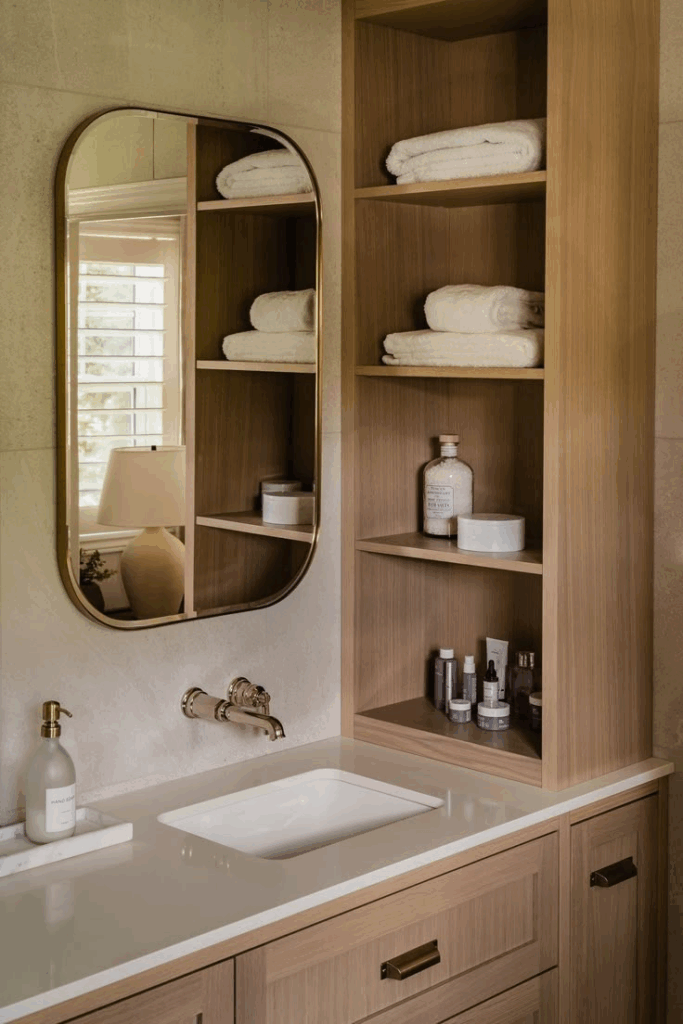
Clutter-free bathrooms rely heavily on smart storage that doesn’t interfere with design. Integrated solutions—like recessed medicine cabinets, built-in niches, and under-sink drawer organizers—prioritize utility while maintaining visual harmony. These concealed or seamlessly built features allow toiletries, linens, and accessories to remain accessible without compromising the aesthetic. Custom vanities with hidden compartments or mirror cabinets with LED lighting serve dual purposes, improving both form and function. Open shelving in minimalist frames can also blend into tiled walls for a low-profile yet stylish look. What makes these features timeless is their practical value across all design styles. Whether the bathroom leans modern, transitional, or classic, integrated storage works behind the scenes to simplify daily routines. The key lies in thoughtful layout planning, ensuring each zone has its dedicated purpose. With customization options increasingly available, homeowners can tailor solutions to their habits, ensuring the space stays beautiful and functional for years to come.
Statement Lighting Fixtures
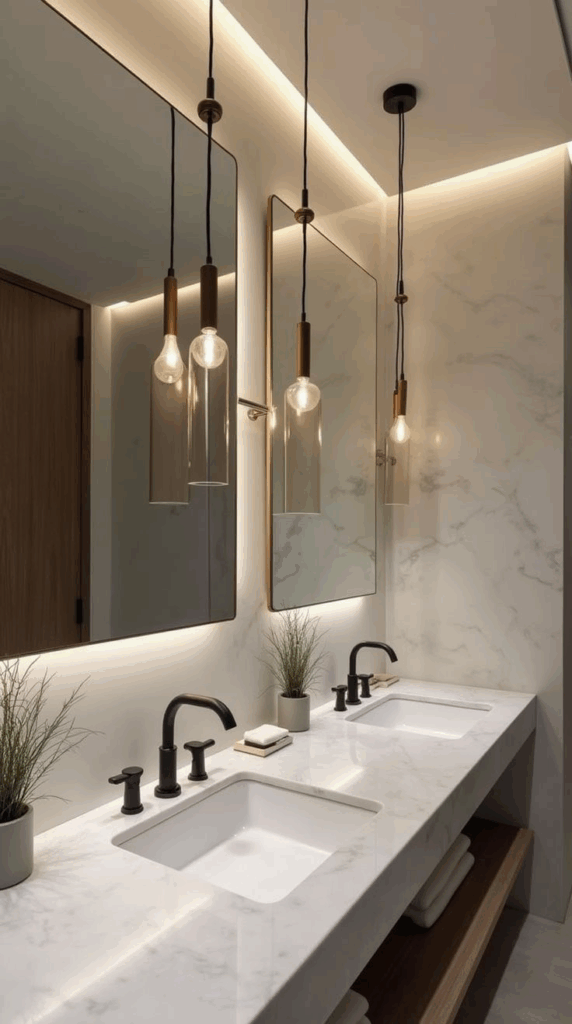
Visual impact begins at eye level, and statement lighting delivers both functionality and style. Oversized pendants, sculptural sconces, or asymmetrical chandeliers offer a bold focal point, especially when placed over freestanding tubs or vanities. These fixtures not only provide essential illumination but also serve as artistic expressions, breaking the monotony of utilitarian design. Materials such as smoked glass, matte black metal, or frosted alabaster add depth and character. Dimmable LED options allow for mood adjustments, shifting from bright task lighting to soft ambient glow with ease. Unlike trendy decor that cycles out quickly, statement lighting endures when paired thoughtfully with neutral backdrops and clean architectural lines. Its adaptability to evolving styles ensures longevity—what changes is the fixture’s role within the space, not its relevance. By balancing beauty and utility, statement lighting continues to elevate the everyday bathroom experience into something more luxurious, curated, and enduring in design relevance.
Natural Stone Surfaces
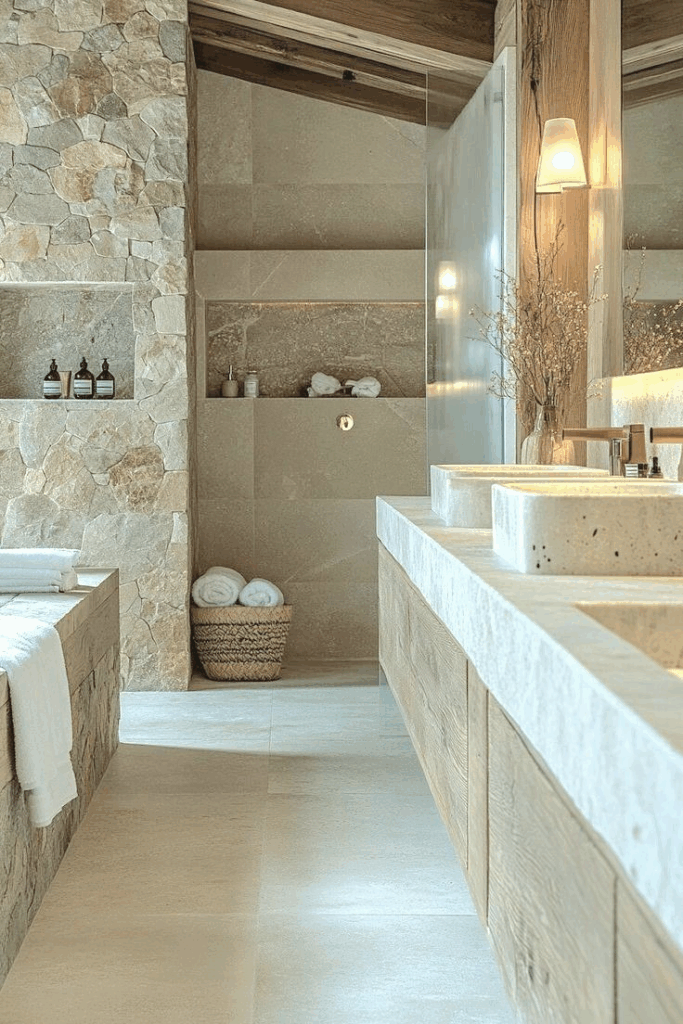
Stone exudes permanence, grounding a bathroom with textures and tones found only in nature. Whether it’s veined marble, honed travertine, or tactile slate, these materials introduce layers of organic beauty that evolve over time. Used for vanity counters, flooring, or accent walls, natural stone pairs beautifully with wood, glass, or metal, adapting to both rustic and refined aesthetics. The appeal lies in its variation—no two slabs are identical—offering a bespoke finish that artificial substitutes can’t replicate. With proper sealing and care, these surfaces maintain their integrity and grow richer in character with use. From a sustainability standpoint, natural stone aligns with eco-conscious principles when sourced responsibly. Its enduring popularity comes from its ability to look fresh yet grounded, luxurious yet natural. Whether you’re renovating a modern sanctuary or restoring a period home, natural stone stands as a consistent design choice that gracefully withstands both time and trend.
Patterned Mosaic Flooring
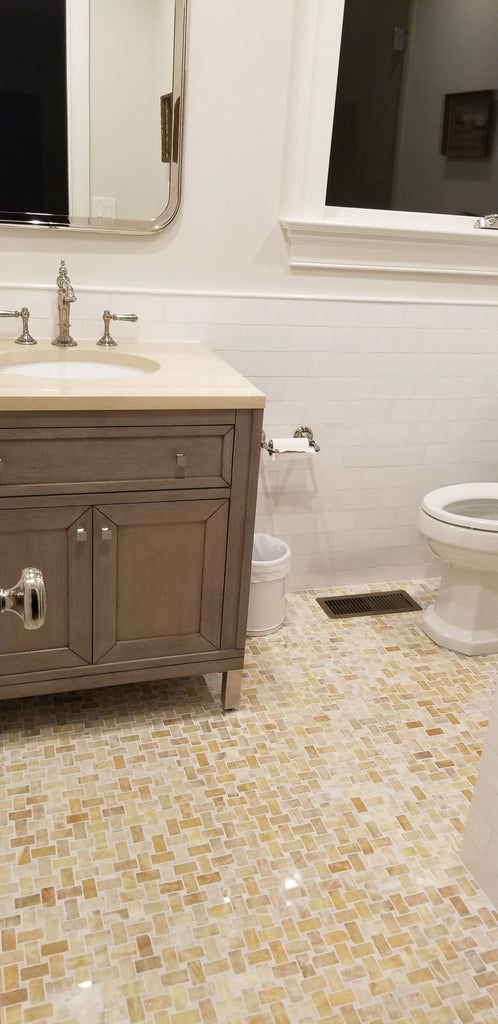
Intricate mosaics underfoot provide a moment of design delight. From geometric patterns to Mediterranean motifs, mosaic floors offer more than decoration—they ground the space with visual rhythm and artistic expression. Made from ceramic, marble, glass, or porcelain, they can suit a wide range of styles, from vintage-inspired powder rooms to contemporary wet areas. Advances in manufacturing have made installation more durable and less labor-intensive, increasing accessibility. When balanced with neutral walls or simple fixtures, patterned floors become the star without overwhelming the room. They also offer a practical advantage—smaller tile segments with more grout lines create additional slip resistance, ideal for wet environments. This design choice has remained evergreen because it merges function and beauty seamlessly. Homeowners who appreciate craftsmanship and bold detail find mosaic flooring to be a reliable way to personalize their space while ensuring it remains visually interesting and timelessly stylish year after year.
Matte Black and Brushed Brass Fixtures

Mixing finishes brings depth and dimension to bathroom hardware, and the pairing of matte black with brushed brass continues to dominate for good reason. Matte black offers a clean, graphic edge while brushed brass adds a layer of warmth and refinement. When used together—think black-framed mirrors with brass faucets or dual-toned shower fixtures—they create contrast that feels intentional rather than overdone. This duo suits a range of styles, from modern farmhouse to art deco revival. Their muted finishes also age well, resisting fingerprints and water spots better than their polished counterparts. By avoiding overly reflective surfaces, they reduce visual clutter and help other textures in the room shine. These fixtures serve as quiet anchors in the space, offering versatility and sophistication without relying on trendiness. As homeowners seek lasting design solutions, this blend of finishes continues to stand out for its practicality, charm, and ability to future-proof bathroom aesthetics.
Large Format Tiles with Minimal Grout Lines
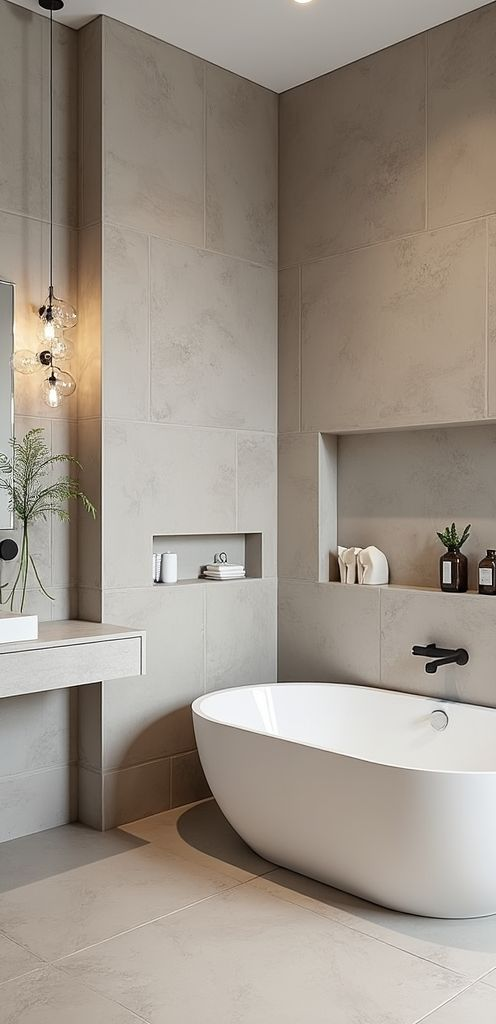
Clean lines and expansive surfaces have become hallmarks of contemporary bathroom design, and large format tiles contribute significantly to that vision. Available in porcelain, ceramic, or natural stone, these tiles minimize grout joints, creating a more seamless and luxurious appearance. The fewer the lines, the less visual interruption—making the space feel more open and serene. Their oversized dimensions also reduce cleaning efforts, as there’s less grout to scrub and maintain. Finishes can range from matte concrete-style textures to high-gloss marble effects, offering design flexibility across both minimalist and ornate interiors. Particularly effective in wet rooms and open showers, these tiles allow water to run off smoothly without pooling between narrow seams. Their structural precision supports both aesthetics and hygiene. Unlike small, detailed tiling which can date quickly, large format tiles maintain a fresh, architectural feel that lasts. This feature resonates with modern homeowners who prioritize both function and visual continuity in long-term design planning.
